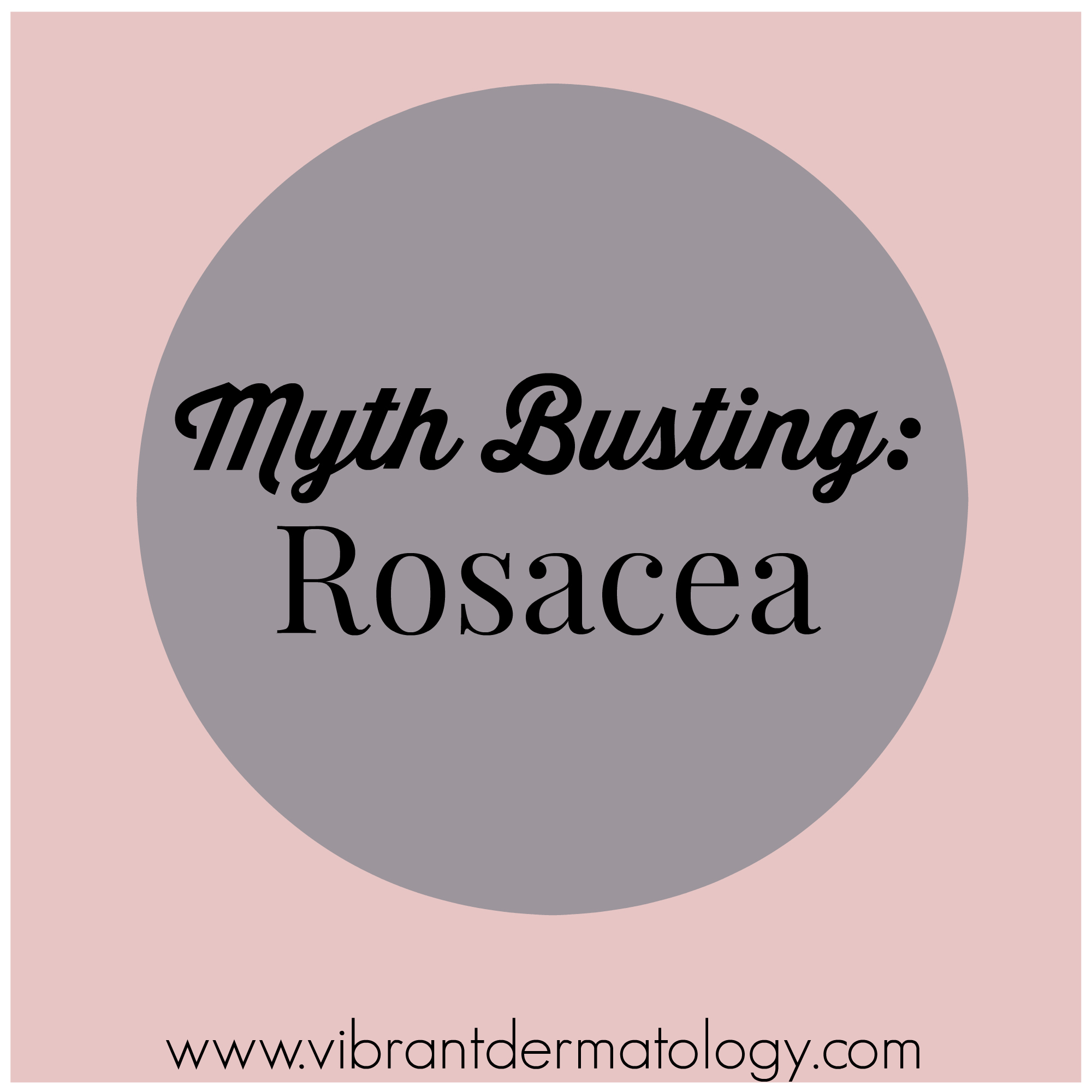April is Rosacea Awareness Month. Almost 5 times a day, a patient will come into my office and say: “Doctor, I have rosacea.” “What do you mean by that?” I ask. “I have a red face, of course” is usually the response. The fact of the matter is that there are many things that can cause facial redness, of which rosacea is only one. Furthermore, it is important to know that there are different sub-types of rosacea. Your treatment options for you rosacea will depend on the sub-type. Let’s discuss the most common ones.
- Telangiectatic Rosacea. This is the type of rosacea that leaves you with a red face. Patients may experience easy flushing as well. Redness and visible blood vessels are more prominent on the cheeks and around the nose.
- Papulopustular Rosacea: Mimics acne without any white heads or black heads. Facial redness and swelling are also prominent.
- Rhinophyma: Characterized by a large, bulbous ruddy nose
- Perioral Dermatitis: A variant of rosacea that causes you to get red bumps and pustules around your mouth and near the corners of your nose
- Occular rosacea: A variant of rosacea that affects the eyes primarily, and is associated with red eyes, and burning, sensitivity to light
If you think that you might have rosacea, please consult with a board certified dermatologist for a diagnosis. So now that we know more about rosacea variants, let’s talk about some common rosacea myths.
- Myth 1. Eating spicy food and drinking alcohol causes rosacea: Many people (incorrectly) assume that rosacea is caused by eating spicy foods and drinking alcohol. This is not true. These things may trigger the redness and flushing that is associated with rosacea but they do not in fact cause rosacea. Additional triggers include sunlight, stress and caffeine.
- Myth 2. Over-the-counter medications that target acne will treat rosacea. Most acne treatments will not work for rosacea. In fact, these medications can cause irritation, making rosacea worse! The most common treatment for rosacea is Metronidazole which is a topical antibiotic that is generally well tolerated. Sometimes a powerful drug used to treat cystic acne (isotretinoin) will be used to help clear up acne-like lesions of rosacea. The type of rosacea that presents with bumps and pimples is often mistaken for acne. However, the cause of acne is different than that of rosacea and needs to be treated differently.
- Myth 3: Rosacea is contagious: Given the fact that rosacea is often treated with antibiotics many people believe that the condition is contagious. In fact, there is zero evidence pointing to rosacea being contagious. Antibiotics work because they are anti-inflammatory.
- Myth 4: The final myth is that rosacea can be cured, and once your skin is clear you are free to stop all treatments. Sadly, there is no official cure for rosacea. Long-term regular treatment of rosacea is often necessary.
Do any of these myths surprise you? Are you struggling to manage rosacea? I’m here to help! Comment below with your questions or email them to me at info@vibrantdermatology.com.
African American Dermatologist


